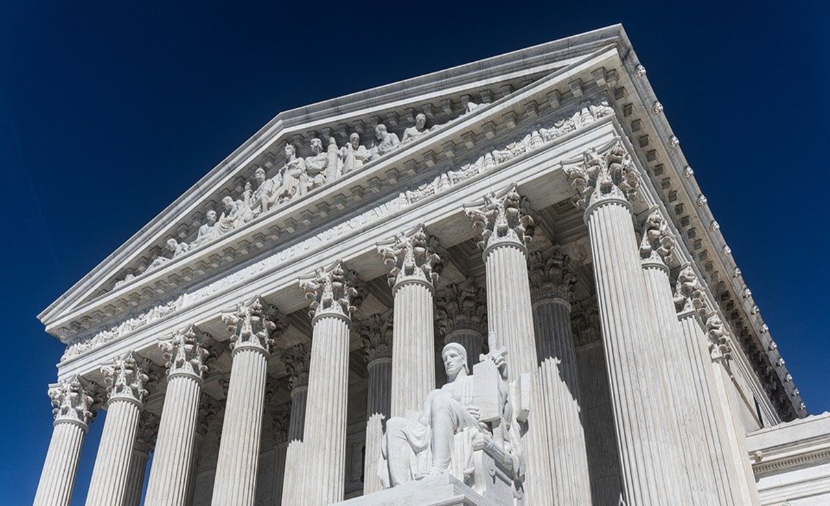“That is not to say OSHA lacks authority to regulate occupation-specific risks related to COVID–19.” — Brett Kavanaugh
It’s not often that the courts weigh in on safety issues. Thank goodness. As Sidney Dekker points out in his book, Just Culture, the involvement of the justice system is bad for safety. It leads to less disclosure (while more disclosure is essential to safety) and a polarization of positions.
So, despite the very strong feelings that the Supreme Court’s recent ruling on OSHA’s Emergency Temporary Standard on Covid-19 vaccination are provoking, there is no point in blaming the Supreme Court.
The question we must face now is where we go from here.
A Love-Hate Relationship
Most safety professionals have a love-hate relationship with OSHA and its regulations. On one hand, we are aware that OSHA regulations drive us toward a safer workplace and the very presence of regulations make the case for being safer more compelling, especially when safety itself doesn’t seem compelling enough. In other words, regulations often give us the backbone to do what we know needs doing. They also level the playing field. Safety is not an expense but an investment. In the short-term, safety is an easy corner to cut, which can give some a short-term competitive advantage. Regulations push everyone toward a long-term perspective, which might not otherwise survive a short-term competitive disadvantage.
On the other hand, compliance usually entails recordkeeping, documentation and a general level of administration and bureaucracy that don’t contribute to safety. That additional administration and bureaucracy makes the work of safety professionals more complicated, however, and diverts finite resources away from making the workplace safer.
There is also a question of whether any compulsory safety measure is as effective as we expect it to be.
Conservation of Recklessness
The Law of Conservation of Recklessness says that people are as safe as they want to be. When people believe they are at greater risk, they behave with greater caution. Conversely, when people believe they are at less risk, they behave with less caution — more recklessly.
As a result, I sometimes question the usefulness of compulsory safety measures. Fundamental to OSHA’s regulatory approach is the expectation that employers provide their employers with the tools they need to be safe. As safety professionals, we can provide people with the tools to be safe. We cannot make people want to be safe, so it is unfortunate that another of OSHA’s fundamentals regulatory approaches is to hold employers responsible for safe or unsafe behavior of their employers.
OSHA notwithstanding, the problem with simply allowing people to be safe as they choose is that the consequences of reckless behavior are often not limited to the person making the reckless choice. While the offsetting effects of improved safety on the one hand and induced recklessness on the other hand cancel each other out, there is also an impact on innocent bystanders who do not share in the benefit, just the hazard.
Safety and Politics
In their dissent, Justices Breyer, Sotomayor, and Kagan stated that Covid-19 “has by now killed almost 1 million Americans and hospitalized almost 4 million. It spreads by person-to-person contact in confined indoor spaces, so causes harm in nearly all workplace environments…Covid-19, in short, is a menace in work settings.” Justice Kavanaugh didn’t dispute this in the Court’s ruling: “The question before us is not how to respond to the pandemic, but who holds the power to do so.”
So, it is not a question of safety, but of power and politics. And the question is not settled. The Secretary of Labor Marty Walsh, speaking as the leader of OSHA, said “Regardless of the ultimate outcome of these proceedings, OSHA will do everything in its existing authority to hold businesses accountable for protecting workers, including under the COVID-19 National Emphasis Program and General Duty Clause.”
We’ve seen that even when expressly forbidden by Congress to create regulation, as was the case with ergonomics, OSHA uses the General Duty Clause to great effect.
What Does Covid-19 Have to Do with Process Safety?
Meanwhile, there are plants to run amidst a labor shortage. Operators and maintenance mechanics work in control rooms and shops that are not especially spacious. They take breaks and eat meals. They join others in meetings—shift turnovers, safety meetings, HazOps and LOPAs—all essential to process safety.
It is important to all of us to keep these employees safe and healthy.
Fortunately, employees in the chemical enterprise are accustomed to safety measures. Hardhats, flame retardant clothing, safety glasses and goggles, safety shoes, and hearing protection are all worn, if not without complaint, with understanding. A mask is just one more safety measure.
The Vaccination
As for the vaccination, I think the Bloodborne Pathogen standard offers a good model. Employers in workplaces where contact with blood or other potentially infectious materials is reasonably expected are required to offer the Hepatitis B vaccination at no cost to employees. Employees, on the other hand, are not required to accept it.
The good that comes from compulsory safety measures is never as complete as we expect it to be. The Law of Conservation of Recklessness suggests that people compelled to undertake a safety measure that makes them safer than they intend to be will compensate with more reckless behavior in other areas. Not consciously, but more reckless, nonetheless. When that increased recklessness happens in a process unit, it has the potential to be catastrophic.
Continue With Efforts
Nothing about the recent Supreme Court ruling addresses employers’ voluntary efforts to address Covid-19. Just as many companies apply the elements of the process safety management standard to processes that are not covered by the PSM standard, not because they are compelled to, but because it makes good sense, employers should apply that same good sense to the other hazards they confront. Don’t wait for the political drama to play out. The virus isn’t.
